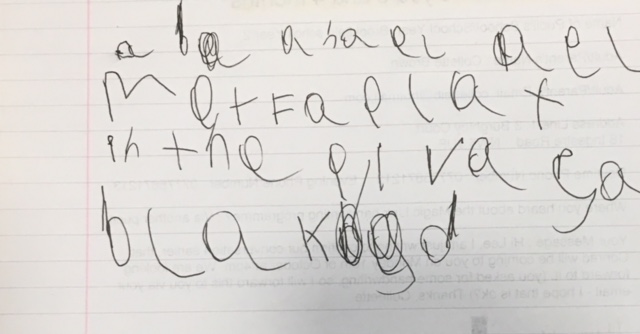- Have any questions?
- (561) 206-2574
- jamie@JamieTheTutor.com
All About Dysgraphia

Structured Literacy: Language is Key
October 20, 2022
5 Tips for the Winter Slowdown
December 14, 2022All About Dysgraphia

What is dysgraphia?
Dysgraphia is a brain-based neurological disorder that affects writing abilities and fine motor skills. Dysgraphia presents challenges with skills such as handwriting, typing, and spelling. People with dysgraphia may write at a slower pace or have a hard time with spelling as it is challenging for them to form letters when writing. They may also have difficulties with legibility, word spacing, and expression.
Signs of dysgraphia
One of the most major signs of dysgraphia is messy handwriting. Here is a list of some other challenges that may occur in a child with dysgraphia:
- Poor fine-motor coordination
- Poor spatial planning on paper
- Performs well on spelling tests but not with actual usage
- Does not apply conventions
- Avoidant to writing
- Uses a mixture of uppercase and lowercase letter in sentences
- Difficulty following grammar rules
In addition to the list above, here is a list of key handwriting skills that are more challenging for those with dysgraphia:
- Forming letters
- Writing sentences that are grammatically correct
- Writing in a straight line
- Correct spacing between letters
- Holding a writing tool
- Writing legibly
- Writing words without skipping letters
Causes of dysgraphia
- Acquired dysgraphia: associated with disease, degenerative conditions, or brain injury that cause a person to lose previously acquired writing skills.
- Developmental dysgraphia: associated with difficulties in acquiring writing skills. It is most commonly found in children and the causes are unknown.
Developmental dysgraphia can be broken down into 3 categories:
- Motor dysgraphia: lack of visual perception and fine motor coordination which leads to difficulties with producing written text
- Spatial dysgraphia: difficulties with spatial perception which impacts letter spacing and drawing abilities
- Linguistic dysgraphia: impacts language processing skills that are required for the process of writing
Dysgraphia can occur along with other learning differences such as ADHD, dyslexia, and expressive language disorder. If you child is struggling with handwriting, there are many interventions including structured literacy programs, Orton-Gillingham, and Occupational Therapy, that can help remediate deficits related to dysgraphia.

